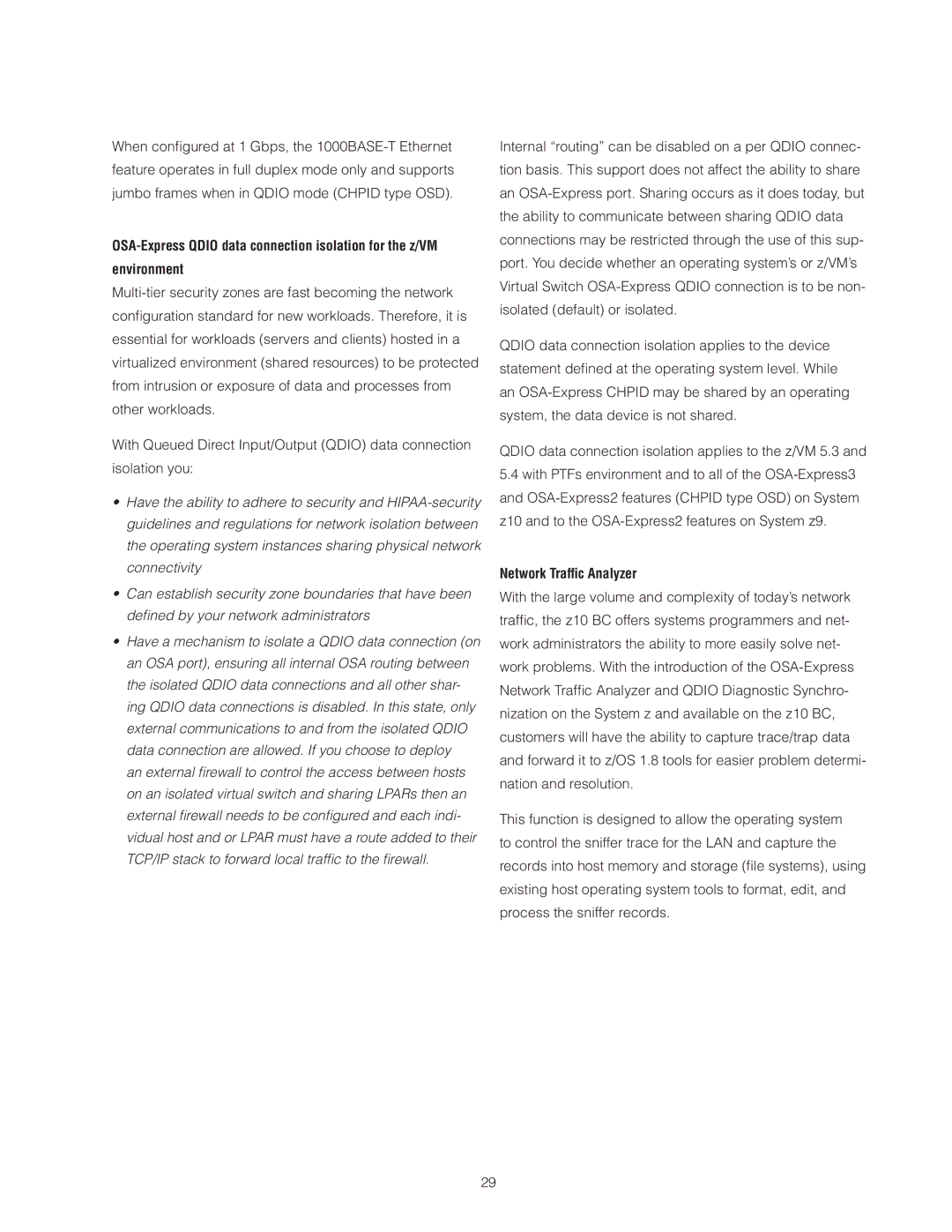When confi gured at 1 Gbps, the
environment
With Queued Direct Input/Output (QDIO) data connection isolation you:
•Have the ability to adhere to security and
•Can establish security zone boundaries that have been defi ned by your network administrators
•Have a mechanism to isolate a QDIO data connection (on an OSA port), ensuring all internal OSA routing between the isolated QDIO data connections and all other shar- ing QDIO data connections is disabled. In this state, only external communications to and from the isolated QDIO data connection are allowed. If you choose to deploy
an external firewall to control the access between hosts on an isolated virtual switch and sharing LPARs then an external firewall needs to be confi gured and each indi- vidual host and or LPAR must have a route added to their TCP/IP stack to forward local traffi c to the fi rewall.
Internal “routing” can be disabled on a per QDIO connec- tion basis. This support does not affect the ability to share an
QDIO data connection isolation applies to the device statement defi ned at the operating system level. While an
QDIO data connection isolation applies to the z/VM 5.3 and
5.4with PTFs environment and to all of the
Network Traffic Analyzer
With the large volume and complexity of today’s network traffi c, the z10 BC offers systems programmers and net- work administrators the ability to more easily solve net- work problems. With the introduction of the
This function is designed to allow the operating system to control the sniffer trace for the LAN and capture the records into host memory and storage (fi le systems), using existing host operating system tools to format, edit, and process the sniffer records.
29
